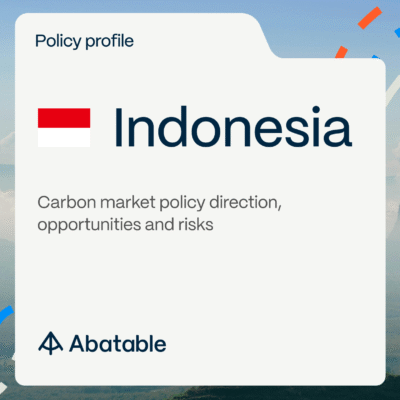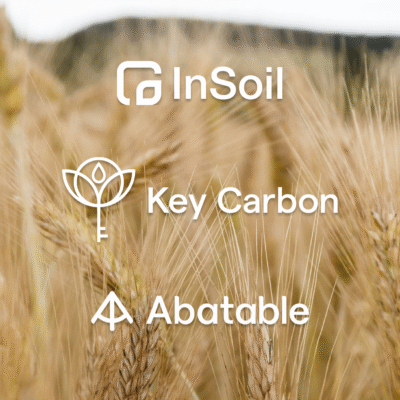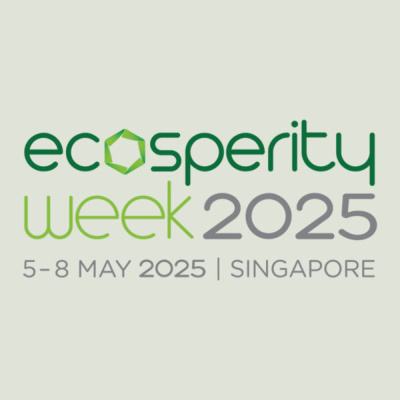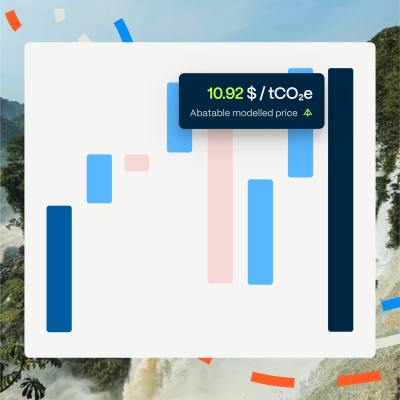Valentina Hernandez Gomez outlines the policy tools available in Abatable’s new intelligence platform.
Developing, investing in or buying credits from carbon projects comes with a unique set of risks depending on the jurisdiction you’re looking at. Abrupt policy changes can have an outsized influence on the success or failure of a carbon project: if, for example, a jurisdiction decides to put a moratorium on the sale of credits this could be catastrophic for market participants.
To help keep market players informed about such risks, Abatable has spent the last year developing and honing a comprehensive policy assessment framework within its intelligence platform. Our policy tools help users understand and compare policy risks and opportunities across countries, ultimately enabling more informed project, investment and buying decisions in the voluntary carbon market (VCM).
Understanding policy risk in the VCM
Companies and individuals working in a market without a clear understanding of policy risks are vulnerable to unexpected regulatory changes and market disruptions. Increasing knowledge around policy risk improves decision-making, helping to protect investors and market actors in their pursuit of climate impact.
For the VCM, understanding policy risk is crucial as it directly affects project viability and, by extension, credit pricing. This is particularly important as more countries develop complex carbon market frameworks and begin to engage with international mechanisms such as Article 6 of the Paris Agreement.
Abatable’s policy assessment framework
Within our intelligence platform, our policy assessment framework enables users to analyse policy risks across eight risk dimensions:
- Export of VCM credits: This allows users to assess whether countries allow carbon credits to be sold internationally, and under what conditions. This includes evaluating potential export restrictions, moratoriums, or requirements for corresponding adjustments – how credits count against countries’ climate pledges, or Nationally Determined Contributions (NDCs), under the Paris Agreement.
- Carbon rights: This allows users to examine how countries define and regulate carbon rights – who owns them, how they can be transferred and whether there are any disputes between governments, communities, and project developers.
- Article 6 engagement: This allows users to evaluate a country’s readiness and approach to implementing Article 6 of the Paris Agreement, including their stance on corresponding adjustments and authorisation processes for international transfers.
- Policy-driven impacts on project economics: This allows users to analyse how government policies affect project viability through measures such as taxation, benefit-sharing requirements or NDC carve-outs (which refers to a country claiming a portion of carbon credits towards its own climate targets (NDCs) rather than allowing them to be sold on the international carbon market).
- Administrative requirements: This allows users to review the procedures and infrastructure needed to develop and operate carbon projects, from initial approvals to ongoing monitoring and reporting obligations.
- Government carbon market sophistication: This allows users to assess a government’s technical capacity and experience in carbon markets, including its ability to develop and implement coherent policies and regulations.
- Property rights: This allows users to examine the security and clarity of land tenure and property rights, which is particularly crucial for nature-based projects where land rights can be complex.
- Convergence with compliance markets: This allows users to analyse how voluntary carbon markets interact with existing or planned carbon market compliance schemes, which could potentially affect demand and prices for carbon credits.
Our scoring methodology evaluates both current conditions and expected policy developments for each dimension, enabling users to monitor expected policy changes and identify key opportunities or concerns. Users can also use the scores to easily compare risks – both current and expected – across countries.
Let’s look at Colombia as an example. Our scoring methodology gives the country a current policy score of 56/100, with a forecasted improvement to 71/100. The projected rise is driven by several upcoming developments, including new regulations expected from the Ministry of Environment and Sustainable Development in 2024 covering project development procedures and safeguards, an Emissions Trading System pilot set to start in 2025 and a potential Article 6 framework.
Supporting and guiding market stakeholders
Our policy tools are designed to support different stakeholders in the carbon market, each of which have their unique needs and challenges. Project developers, for instance, often use our platform to explore new markets to operate in. For instance, a developer considering an expansion might use our policy profiles to compare administrative requirements and carbon rights frameworks across multiple countries, helping them prioritise markets with the most favourable and stable policy environments.
Investors find particular value in our forward-looking analyses. Investment funds consult our policy assessments as part of their due diligence process, using our risk scoring to evaluate how policy developments might affect project returns in the future.
Credit buyers, particularly those building long-term offsetting strategies, use our platform to understand the policy landscape in countries where they source credits. For example, a corporate buyer could use our analysis to understand how a country’s engagement with Article 6 might affect its ability to claim credits toward its voluntary commitments.
Staying ahead with market news and events
To complement our country-level risk assessments, we maintain a dedicated news and events tracker within each country profile. This feature helps users stay informed about policy developments that could affect their projects or investments.
In Colombia, for example, users can track upcoming regulatory changes, such as the Ministry of Environment’s planned release of new carbon market regulations this year, alongside historical developments like recent court rulings affecting REDD+ projects in collective territories.
Our policy assessments are updated through comprehensive quarterly reviews as well as whenever significant policy developments occur, triggering immediate updates. In the case of the latter, our policy team analyses the event’s impact and updates our assessments accordingly, ensuring access to current policy risk information.
In parallel our news tracking is refreshed weekly to ensure users stay up-to-date with the latest market developments. We also regularly engage with local stakeholders to validate our analysis and capture emerging trends that could affect policy trajectories.
Aiding navigation
The carbon policy landscape can be difficult to navigate, with risk factors varying significantly across jurisdictions. Our policy tools solve this problem by offering users:
- Standardised scoring across jurisdictions
- Regular updates based on policy developments
- Deep dives into specific risk areas
- Forward-looking analysis of policy direction
- Expert insights from local stakeholders
Our policy module currently offers detailed country profiles for over 25 fundamental carbon market countries. Key metrics, carbon market engagement data, and political landscape information are available for free to all users. For deeper insights, pro users can access our full policy risk scoring framework, historical market news, and real-time policy alerts.
What’s next?
We’re continuously seeking feedback to improve our policy assessment framework.
One area we’re currently developing is a new risk category focusing on FPIC (Free, Prior and Informed Consent). Recent challenges in REDD+ and nature-based solutions projects related to proper consultation with Indigenous Peoples and Local Communities (IP&LCs) have highlighted the importance of this subject. We’ve received inquiries from various stakeholders seeking to understand the specific rules applicable to their projects of interest. This feedback drives our commitment to evolving our policy module as carbon markets mature and new policy frameworks emerge.
We’re also constantly monitoring new and emerging countries in the market and welcome suggestions from users on which countries they’d like us to cover next as we expand our coverage.
Please get in touch with any suggestions at [email protected]
Our policy tools are designed to enable market participants to better understand and manage policy risks, ultimately supporting the development of high-quality carbon projects worldwide.
Find out more and sign up to our intelligence platform here.
Read more about what’s available in the platform here.


































































































